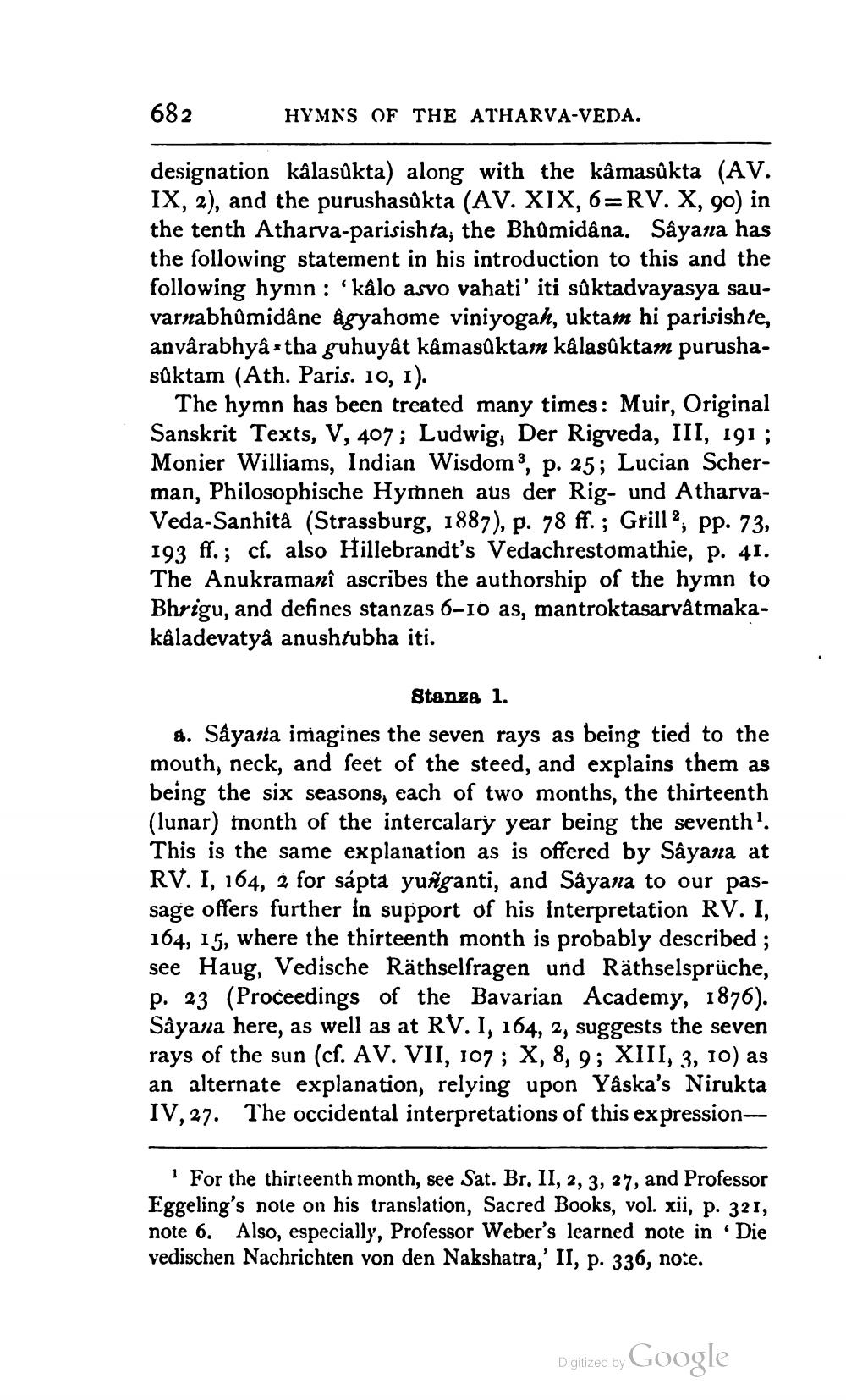________________
682
HYMNS OF THE ATHARVA-VEDA.
designation kâlasůkta) along with the kâmasûkta (AV. IX, 2), and the purushasûkta (AV. XIX, 6=RV. X, 90) in the tenth Atharva-parisishta; the Bhumidâna. Sâyana has the following statement in his introduction to this and the following hymn: 'kâlo asvo vahati' iti sûktadvayasya sauvarnabhůmidåne ágyahome viniyogah, uktam hi parisishte, anvârabhyåstha guhuyât kâmasaktan kâlasûktam purushasúktam (Ath. Paris. 10, 1).
The hymn has been treated many times: Muir, Original Sanskrit Texts, V, 407; Ludwig, Der Rigveda, III, 191; Monier Williams, Indian Wisdom, p. 25; Lucian Scherman, Philosophische Hymnen aus der Rig- und AtharvaVeda-Sanhita (Strassburg, 1887), p. 78 ff. ; Grill, pp. 73, 193 ff.; cf. also Hillebrandt's Vedachrestomathie, p. 41. The Anukramanî ascribes the authorship of the hymn to Bhrigu, and defines stanzas 6-10 as, mantroktasarvatmakakåladevatyå anushtubha iti.
Stanza 1. 8. Sâyaria imagines the seven rays as being tied to the mouth, neck, and feet of the steed, and explains them as being the six seasons, each of two months, the thirteenth (lunar) month of the intercalary year being the seventh'. This is the same explanation as is offered by Sâyana at RV. I, 164, 2 for sápta yuñganti, and Sảyana to our passage offers further in support of his interpretation RV. I, 164, 15, where the thirteenth month is probably described ; see Haug, Vedische Räthselfragen und Räthselsprüche, p. 23 (Proceedings of the Bavarian Academy, 1876). Sâyana here, as well as at RV. I, 164, 2, suggests the seven rays of the sun (cf. AV. VII, 107 ; X, 8, 9; XIII, 3, 10) as an alternate explanation, relying upon Yâska's Nirukta IV, 27. The occidental interpretations of this expression
For the thirteenth month, see Sat. Br. II, 2, 3, 27, and Professor Eggeling's note on his translation, Sacred Books, vol. xii, p. 321, note 6. Also, especially, Professor Weber's learned note in Die vedischen Nachrichten von den Nakshatra,' II, p. 336, no:e.
Digized by Google




